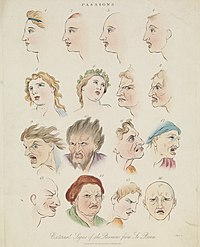
Parental Concerns about their School-aged Children’s Use of Digital Devices
Sign Up to like & getrecommendations! Published in 2020 at "Journal of Child and Family Studies"
DOI: 10.1007/s10826-020-01760-y
Abstract: Mobile devices are widely used throughout parent–child routines and family life. Emerging research suggests several concerns about the effects of their use on children’s socio-emotional development. These concerns have led to a proliferation of prevention… read more here.
Keywords: use digital; digital devices; children use; school aged ... See more keywords

Children’s Use of Time and Well-Being in Italy
Sign Up to like & getrecommendations! Published in 2019 at "Child Indicators Research"
DOI: 10.1007/s12187-018-9567-y
Abstract: Several studies indicate that the manner in which children spend their time affects their cognitive and social development. But, the time that a child dedicates to compulsory and extra-curricular activities depends on a set of… read more here.
Keywords: time; use time; well italy; children use ... See more keywords

When Representation Becomes Reality: Interactive Digital Media and Symbolic Development.
Sign Up to like & getrecommendations! Published in 2019 at "Advances in child development and behavior"
DOI: 10.1016/bs.acdb.2018.12.001
Abstract: One challenge of using an interesting object such as a scale model as a symbol for something else is children's deep interest in the object itself. Attending to the model (the symbol) as a toy,… read more here.
Keywords: representation becomes; symbolic development; children use; reality interactive ... See more keywords

When it is apt to adapt: Flexible reasoning guides children's use of talker identity and disfluency cues.
Sign Up to like & getrecommendations! Published in 2018 at "Journal of experimental child psychology"
DOI: 10.1016/j.jecp.2017.11.008
Abstract: An eye-tracking methodology was used to examine whether children flexibly engage two voice-based cues, talker identity and disfluency, during language processing. Across two experiments, 5-year-olds (N = 58) were introduced to two characters with distinct color preferences.… read more here.
Keywords: use talker; identity disfluency; talker identity; disfluency ... See more keywords

How children use accuracy information to infer informant intentions and to make reward decisions.
Sign Up to like & getrecommendations! Published in 2019 at "Journal of experimental child psychology"
DOI: 10.1016/j.jecp.2018.07.017
Abstract: The ability to assess the value of the information one receives and the intentions of the source of that information can be used to establish cooperative relationships and to identify cooperative partners. Across two experiments,… read more here.
Keywords: information; positive intentions; informant intentions; children use ... See more keywords

Children use rules to coordinate in a social dilemma.
Sign Up to like & getrecommendations! Published in 2019 at "Journal of experimental child psychology"
DOI: 10.1016/j.jecp.2018.11.001
Abstract: Humans are frequently required to coordinate their actions in social dilemmas (e.g. when one of two drivers has to yield for the other at an intersection). This is commonly achieved by individuals following communally known… read more here.
Keywords: game; social dilemma; rules coordinate; children use ... See more keywords

Children's use of demonstrative words: spatial deictics beyond infancy.
Sign Up to like & getrecommendations! Published in 2022 at "Journal of child language"
DOI: 10.1017/s030500092200054x
Abstract: Demonstrative words are one of the most important ways of establishing reference in conversation. This work describes Spanish-speaking children's demonstrative production between ages 2 to 10 using data from the CHILDES corpora. Results indicate that… read more here.
Keywords: children use; words spatial; deictics beyond; use demonstrative ... See more keywords

How children can use drawing to regulate their emotions
Sign Up to like & getrecommendations! Published in 2023 at "Theory Into Practice"
DOI: 10.1080/00405841.2023.2202132
Abstract: ABSTRACT Learning how to regulate emotions is a significant developmental milestone in a child’s life. It is important to understand which activities help children cope with emotionally distressing situations. One such activity, I argue, is… read more here.
Keywords: regulate emotions; drawing regulate; children use; use drawing ... See more keywords

Young children’s use of their setting’s internal floor space affordances: evidence from an ethnographic case study
Sign Up to like & getrecommendations! Published in 2018 at "Early Child Development and Care"
DOI: 10.1080/03004430.2018.1539843
Abstract: ABSTRACT Young children’s use of their Early Childhood Education and Care (ECEC) environment affordances, and especially the affordances of the floor, is an under researched area, both in Greece and internationally. This paper draws on… read more here.
Keywords: study; floor; young children; children use ... See more keywords

Asthma 101: Teaching children to use metered dose inhalers.
Sign Up to like & getrecommendations! Published in 2019 at "Nursing"
DOI: 10.1097/01.nurse.0000552703.80996.43
Abstract: Providers across the spectrum of healthcare must be aware of their patients' inhaler use. This article addresses common errors and the proper use of pressurized metered-dose inhalers in pediatric patients. read more here.
Keywords: dose inhalers; metered dose; teaching children; children use ... See more keywords

Prosodic constraints on children’s use of grammatical morphemes
Sign Up to like & getrecommendations! Published in 2019 at "First Language"
DOI: 10.1177/0142723717751984
Abstract: It has long been known that children may use a particular grammatical morpheme inconsistently at early stages of acquisition. Although this has often been thought to be evidence of incomplete syntactic representations, there is now… read more here.
Keywords: prosodic constraints; use grammatical; phonology; grammatical morphemes ... See more keywords